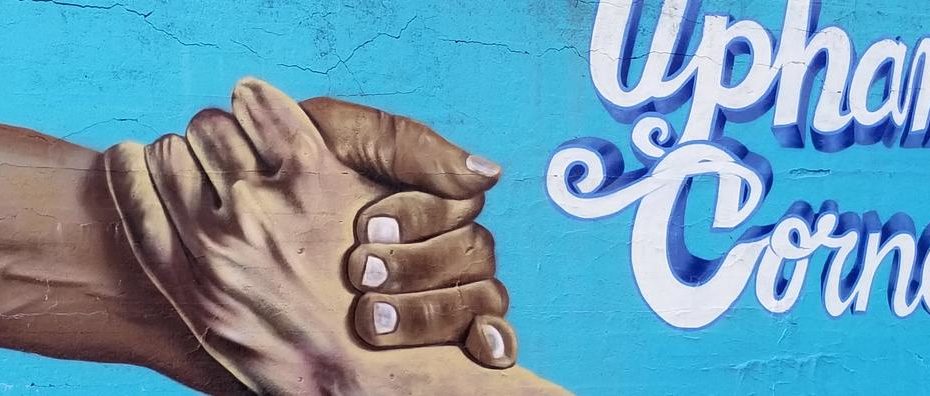This post was originally published on UEP professor Penn Loh’s personal Practical Visionaries blog. Read the original article, posted on June 16, 2021, here.
Luisa Santos and Molly Kaviar completed their Tufts UEP Master’s theses this spring 2021, working with the Dudley Street Neighborhood Initiative (DSNI). Both served as Research Assistants on a community action research project between UEP and DSNI that started in 2018. [For more on this project, go to this website.]
DSNI has been working for community control over development since the early 1980s and owns over 30 acres of land through its community land trust. It acquired a former bank building in the Upham’s Corner commercial district in 2017 and has been co-facilitating with City of Boston a public process to build an Arts and Innovation District. Upham’s Corner is home to the historic Strand Theater, which is owned by the City of Boston. In addition to DSNI’s building and the Strand, the City is also redeveloping another former bank building that it owns and a municipal parking lot. The vision for this district is to create opportunities for local residents, artists, and businesses and to do development without displacement.
Luisa Santos worked with this project from 2018-2020, while Molly Kaviar served from 2019-2021. Luisa’s thesis provides an in-depth documentation of the Upham’s Corner process, including the history of community control in the neighborhood, planning processes that led to this one, and descriptions of the collaboration between the City and DSNI, the stakeholder advisory group process, and the series of community meetings and workshops to develop the vision for the arts and innovation district. Luisa uses data from 19 interviews to then analyze how DSNI and community partners have been asserting community control over this redevelopment process in Upham’s Corner.
Molly’s thesis explores the use of arts and creative engagements in the Upham’s Corner planning process. She traces these efforts to creative placemaking initiatives that DSNI and other community partners started more than a decade ago. She analyzes how these methods have been integrated into the development process and how they have created new avenues for community participation. Molly co-authored an article in Shelterforce magazine “Arts for Community Control” drawing on her thesis work.
Luisa and Molly’s theses can be downloaded through the links below:
By Luisa Santos
Abstract
The Upham’s Corner Implementation (UCI) Process aims to redevelop the Upham’s Corner commercial center into an arts and innovation district without displacement. The UCI process is a unique case because it involves a community-control organization, the Dudley Street Neighborhood Initiative (DSNI), as co-facilitator. DSNI’s community land trust, Dudley Neighbors, Inc. (DNI), owns a key redevelopment site. Using various research methods including participatory action research, archival research, participant observation, semistructured interviews, and a grounded theory approach to data analysis, this thesis presents a case study of the UCI process, examining whether and how the DSNI-City partnership and the participatory methods used in the UCI process built community control.
Creative Community Control: A Case Study of Creative Engagements in Upham’s Corner
by Molly Kaviar
Abstract
This thesis presents a case study of how arts-based creative engagements have enhanced a redevelopment process to create an Arts and Innovation district without displacement in Boston’s Upham’s Corner neighborhood. Built on decades of community-led work and co-facilitated by a grassroots community control organization, Dudley Street Neighborhood Initiative (DSNI), and the City of Boston, the Upham’s Corner Implementation (UCI) process is an opportunity to do planning differently. This research aims to make sense of the overlapping and complex layers of this case and understand how creative methods have been used to further DSNI and its partners’ efforts for community control over the redevelopment process. The case study draws on sixteen semi-structured interviews with key stakeholders of the UCI process, meeting observations and notes, and planning documents and reports. While the process is ongoing, I found that arts-based creative engagements have enhanced the UCI process in profound ways.
